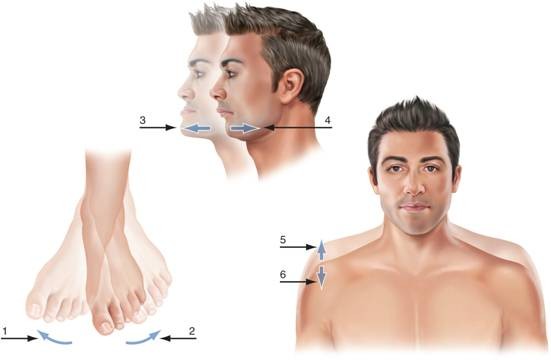 Numbers 3 and 4 on the figure demonstrate ________.
Numbers 3 and 4 on the figure demonstrate ________.
A. depression and inversion
B. eversion and protraction
C. inversion and protraction
D. protraction and retraction
E. elevation and inversion
Answer: D
You might also like to view...
The ___________________________________ is the term that applies to the average number of inpatients present each day for a month.
Fill in the blank(s) with the appropriate word(s).
Occlusion of the basilar artery can produce which syndrome?
a. Wallenberg's b. Alternating hypoglossal c. Complete basilar d. Benedikt's
After examining his patient, your partner tells you that he believes the patient has hyperflexed the knee. What has happened if a patient has hyperflexed a knee?
a. The patient has straightened the knee beyond its normal range of movement. b. The patient has bent the knee backward beyond its normal range of movement. c. The patient has pushed the kneecap too far to the right or left. d. The patient has straightened the knee into a normal position.
A tool, device, or system used to assist a person with executing specific tasks
What will be an ideal response?